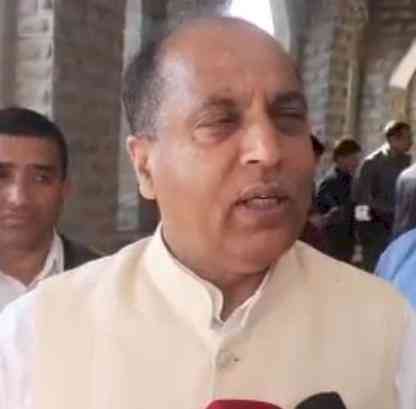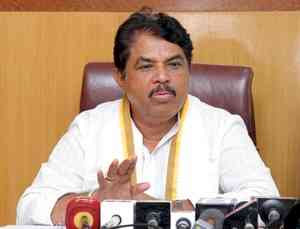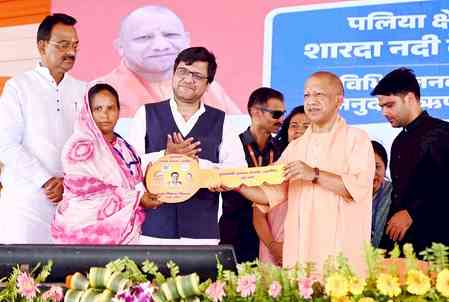Nod to construction even in Shimla's sinking, congested zones
In the run-up to the Assembly elections scheduled later this year, the Himachal Pradesh Cabinet, led by Chief Minister Jairam Thakur, on Wednesday gave its nod to the Shimla Development Plan, a first in over four decades, prepared by the Department of Town and Country Planning to allow construction even in the core, congested and sinking zones.

Vishal Gulati
Shimla, April 27 (IANS) In the run-up to the Assembly elections scheduled later this year, the Himachal Pradesh Cabinet, led by Chief Minister Jairam Thakur, on Wednesday gave its nod to the Shimla Development Plan, a first in over four decades, prepared by the Department of Town and Country Planning to allow construction even in the core, congested and sinking zones.
Critics say this decision is aimed to allow two-and-a-half-storey structures in Shimla's core area and three-and-a-half floors in the rest of the city.
Also, they say, it is against the National Green Tribunal (NGT) ruling that banned fresh constructions in the core area, the area above the Cart Road, and restricted new buildings to two-and-a-half storeys.
In a matter pertaining to regularisation of unauthorised constructions in Shimla, the state high court this month issued notices to the Chief Secretary, the Additional Secretary, Town and Country Planning, and the Director, Department of Town and Country Planning.
They have been asked to file a reply by the next date of hearing, i.e., May 9.
Rampant construction by realtors and amendments to land laws from time to time to attract non-residents have created a concrete jungle across Himachal Pradesh's once scenic towns, starting with its capital Shimla, the erstwhile summer capital of British India.
Geologists warn that this can't be good for the mountains and may amplify ecological risk.
Section 118 of the Himachal Pradesh Tenancy and Land Reforms Act of 1972 provides for restriction on transfer of land in favour of a person who is not an agriculturist of the state.
This section and rules under it have been amended from time to time to further the basic intention behind its enactment of protecting the interests of local inhabitants while ensuring that the development of the state is not hampered, claims the government.
Contrary to this, the desire to buy an ultra-luxury cottage or a flat in the idyllic settings has been attracting a stream of rich people who are largely owning a piece of paradise to escape the hell of summer and to enjoy a snowy landscape in the hills during winter. And this helps the realtors build business.
In Shimla, most of the buildings are "precariously hanging" on the steep slopes and clinging to one another and are in danger of collapsing like a pack of cards with a moderate intensity temblor. This can be catastrophic for congested settlements like Sanjauli, Hira Nagar and Ladakhi Mohalla that could take a heavy toll on human lives.
The successive Congress and BJP governments kept on amending the existing Interim Development Plan prepared for the Shimla planning area in 1979 just for political gains and are least bothered to set in place a scientific development plan, say local residents.
Planned for a maximum population of 16,000, Shimla now supports 2,36,000 people, as per the provisional figures of the 2011 Census.
The previous BJP government led by Prem Kumar Dhumal had constituted a one-man commission of Justice (retd) D.P. Sood, a former judge of the state high court, to probe illegal land transactions in the state and look into violations of statutory provisions and administrative procedures.
Interestingly, it observed that most of the builders were catering to the needs of the rich from Punjab, Haryana, Delhi and Non-resident Indians.
Himachal Pradesh is prone to various types of disasters. The central government has identified 25 hazards to which the state is prone.
(Vishal Gulati can be contacted at [email protected])


 IANS
IANS 










